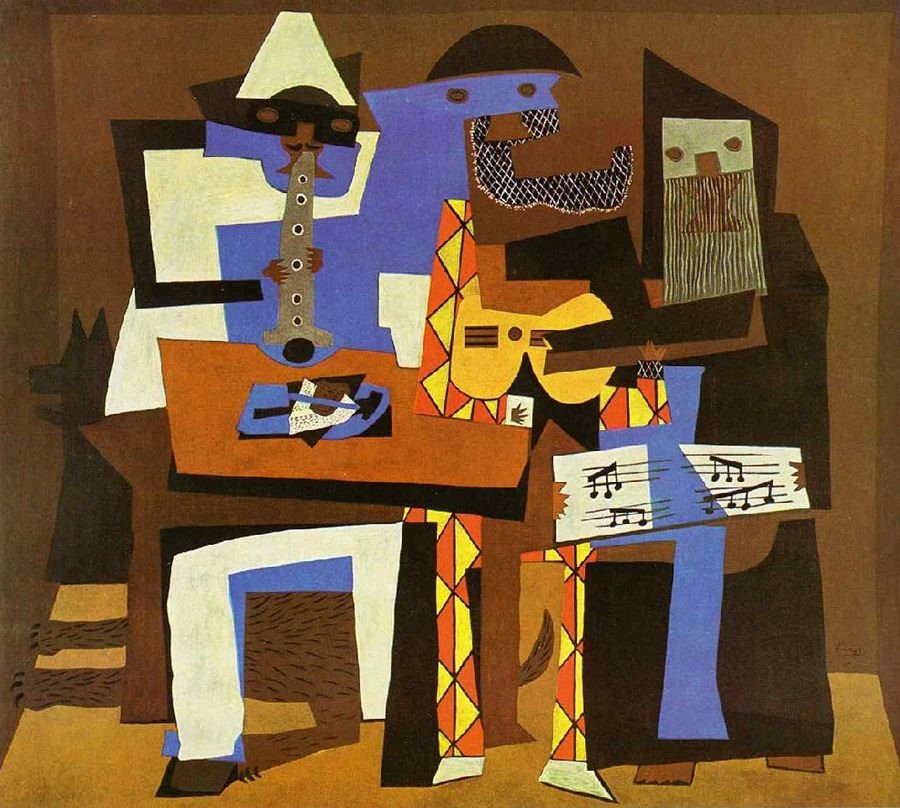Stravinsky’s Riotous Ballet
Picasso, Three Musicians
Not many pieces of art music can be said to have inspired a riot, although that is the story that often accompanies any discussion of Russian composer Igor Stravinsky’s (1882 – 1971) The Rite of Spring (36 minutes). At the premier in Paris in 1913, audience members first booed, then began to argue among themselves—some appreciated the music and some despised it. (As you can tell, the French took their art music seriously in those days.) Shouts and fistfights in the aisles eventually degenerated into a full-fledged riot. What on earth could inspire such violence from a sophisticated Parisian audience?
The Rite of Spring (in French, Le Sacre du printemps) with subtitle “Pictures from Pagan Russia,” is a ballet about preparations for and completion of a pagan ritual to sacrifice a young girl to appease and to gain the benevolence of the god of Spring. This is not your usual graceful or fanciful ballet plot. (Think forest fairies, nutcrackers, and swan princesses.)
The dancing, choreographed by famous Russian choreographer Vaslav Nijinsky, was angular and severe. The music, as Alex Ross points out in The Rest Is Noise: Listening to the Twentieth Century, consists of little fragments of folk music, pressed together, juxtaposed, and combined. The music has been compared to cubist painting. The resulting dissonance, tension, and violence apparently had an unforeseen intense effect on the audience.
The music and ballet are in two major sections. Part I, Adoration of the Earth; and Part II, The Sacrifice. Here are the titles for Part I:
Introduction
Dance of the Young Girls
Ritual of Abduction
Round Dances of Spring
Ritual of Rival Tribes
Procession of the Sage
The Sage (Adoration of the Earth)
Dance of the Earth
Here are the dances in Part II:
Introduction
Mystic Circles of the Young Girls
Glorification of the Chosen One
Evocation of the Ancestors
Ritual Action of the Ancestors
Sacrificial Dance (The Chosen One)
In my opinion, Stravinsky through his music and Nijinsky’s choreography transported the sophisticated, twentieth-century French audience to an earlier, pagan time. It was a brutal time of darkness, superstition, and fear; a pre-Christian time of human sacrifice, and a time of despair and unhindered rage. The music premiered just as Europe trembled on the eve of the outbreak of World War I, one of the most violent and widespread wars in human history. In The Rite of Spring, Stravinsky gave us an intense window into the pre-Christian soul.
Note: a wide audience was exposed to this music through Disney’s 1940 animated feature Fantasia. That’s where I first heard it and found myself fascinated by it as a young boy.
Subscribe to receive an email notice when I post a new blog article.
Please leave a comment below if you like.
